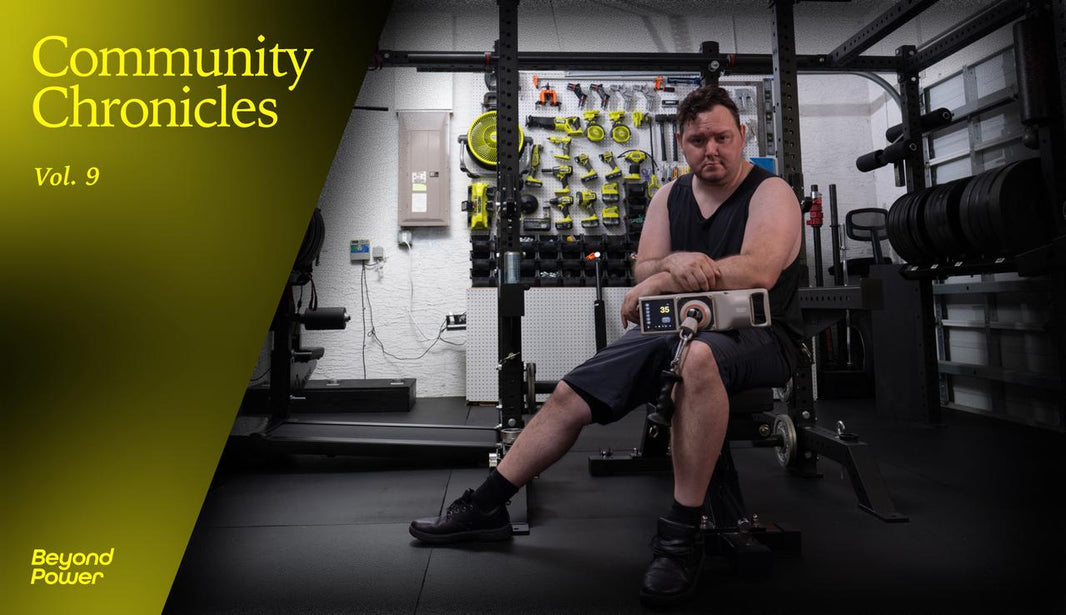Smarter progression starts with trying VOLTRA I's unique Inverse Chains Mode.
Our community asked, we delivered. Inverse Chains started as a community request, and has quickly become one of the most standout features of the VOLTRA smart cable machine system. What exactly is it? How do you use it? And why are serious lifters calling it a game changer for advanced resistance training?
What Is Inverse Chains?
Inverse Chains is VOLTRA I’s training mode that reduces resistance as you move deeper into a rep. This gives you a novel way to adjust load based on joint angle and muscular leverage — especially helpful for overcoming sticking points and accelerating through weaker positions.
Rather than applying constant resistance like traditional cables, Inverse Chains front-loads the difficulty at the start of a movement and eases it off as you move into mechanically stronger positions.
It matters, because in many exercises, such as the seated row, your leverage is stronger when your arms are extended and weaker when you finish the rep. Inverse Chains lets you match the resistance to that curve, starting heavy and backing off just enough to let you complete the rep cleanly.
It’s ideal for:
-
Practicing explosive intent through full ROM
-
Targeting weak points in specific joint angles
-
Programming dynamic effort or fatigue-based drop sets
There’s simply no physical way to mimic this with weight stacks or bands. VOLTRA I lets you program it instantly — no pins, no guesswork, just adaptive load tailored to the lift.
How to Use Inverse Chains
All of VOLTRA’s advanced features are quick to access, even mid session. Just tap the screen on the unit itself, or use the app on your iPhone if it's out of reach.
Step 1: Choose your movement. Go for lifts with clear sticking points: rows, curls, deadlifts, or presses are all good choices.
Step 2: Activate Inverse Chains. In the Weight Training menu, tap at the bottom to access extra features as shown, then select "Chains Type" and switch to "Inverse Chains." Adjust the resistance level you want to start with:
On the unit itself, its the cross on the VOLTRA I Weight Training Menu, then select Inverse Chains and choose your resistance.
Step 3: Train. Rip it! Train for explosiveness, velocity, and feel the unique resistance Inverse Chains are able to apply throughout the movement.
Pro Tip: Want to attack a movement from every angle? Alternate between Chains and Inverse Chains mode between sets to keep your muscles guessing and target different phases of each lift. Takes a second.
Why it Makes a Difference
Variable resistance
works. It’s proven. This
study published in
Biology of Sport found that variable resistance training led to
greater improvements in power output.
Anyone can keep adding weight to the bar, but everyone eventually gets stuck. It’s about what you do when you get stuck that determines how long you stay there. Where is your lift breaking down? What's the weak link that's killing your progress?
The VOLTRA gives you all the tools you need to smash plateaus and hold on to that linear progression by:
-
Overloading smarter, not just heavier
-
Training weak points without sacrificing the rest of the movement
-
Maximising muscle engagement through the entire range of motion
Ultimately, Inverse Chains allows you to build balanced strength with precision.
The Path to Smarter Training
Bring advanced resistance training to your home gym setup without all the chains and math homework. VOLTRA figures it out for you. Just tap in and go.
Diversify your workouts without piling on extra equipment, whether in a home gym or coaching in a facility.
No chains to swap. No plates to move. Just tap, lift, and progress. Get yours
here.
Want to learn about more unique features of the VOLTRA I? Learn about
Eccentric Overload and how it’s useful for stimulating muscle growth by up to 30%.















2 comments
Hey Mark! Appreciate the thoughtful comment. We’ve revised this article based on your feedback. Cheers!
Inverse chains doesn’t apply the most resistance where you are weakest. First it depends on the movement.
But you’re article’s analysis of the row is, from
toes to tits, wrong. In the lengthened position, with your arms extended in front of you, not only are your muscle fibers at a good length to produce force but the moment arm of the resistance is very small, meaning it will
require a lot of weight to challenge our muscles here. As we row our elbows come back and the distance between the line of resistance (in this case it is literally the cable) and the joint being trained (the shoulder in this case) increases, meaning the same weight that was appropriate when our arms were out in front of us is now likely too heavy because the torque has dramatically increased. Additionally here in this shortened position is where our muscles are weakest.
Hope that helps